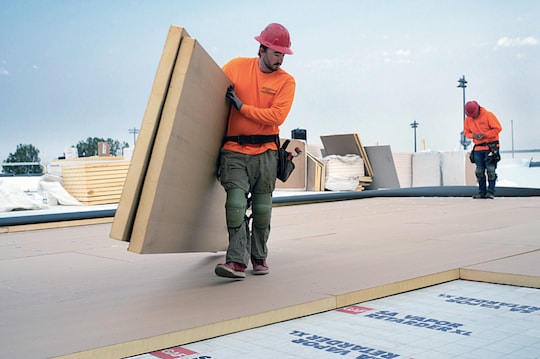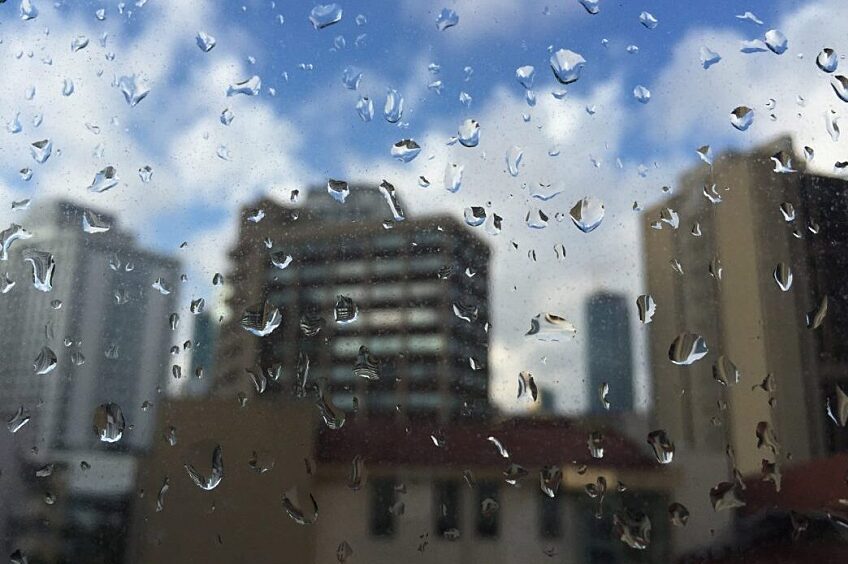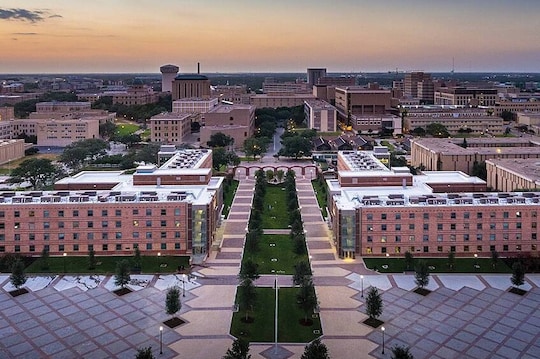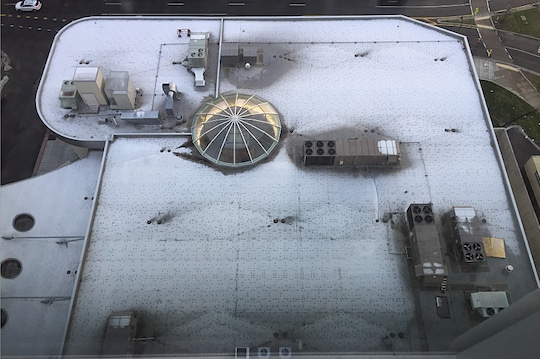
There can be a perception in the market that a "green building" is a better building, and that the risks associated with "building differently" are inherently covered by the green certifications driving the industry forward from a sustainability standpoint. Both better buildings and risk mitigation can be accomplished by green buildings, and this article will discuss some of the key principles to accomplish this for building enclosures and roof assemblies.
Moisture durability of enclosure systems focuses on the interaction of the materials, assemblies, and their design configurations in the building. The goal of managing moisture durability is to establish performance expectations, allow enclosures to perform as intended, continue to perform through the project lifecycle, and be serviced or maintained in a way that minimizes risk of damage to the enclosure and performance of other critical building systems. This discussion is going to focus on the moisture durability aspects of buildings and how they relate to energy performance and lifecycle expectations. While other aspects of resilience are also important, these aspects target risks that are not necessarily related to climate change, but are related to the design of enclosure and roof assemblies directly.
Moisture Durability in Context
The American Institute of Architects defines olor: #333f48;"> as "mitigating risk for hazards, shocks, and stresses and adapting to changing conditions". Resilience goes beyond the minimum code requirements to address issues that influence long-term performance (more here about Sustainability and Resilience). The "hazards, shocks, and stressors" can come from external sources as well as from the design decisions of the built environment. Some are rare extreme events such as tornadoes and wildfires, and some are common and persistent adverse events, like moisture risks in the building enclosure. This perspective of moisture durability as a risk fits within many existing terms and goals that stem from Sustainability, Resilience, Adaptability, and Mitigation initiatives; moisture durability fits within these goals and is not separate from them.
Moisture durability and energy efficiency are part of resilient design
Energy Efficiency is a Moving Target
The minimum or baseline energy efficiency performance expectation has been improving over time. The cost-effective and validated energy saving of one of the underlying national energy standards has increased in each of ANSI/ASHRAE/IES Standard 90,1-2016 (ASHRAE 90,1) 3-year publications. The ASHRAE 90,1 - 2019 version has also recently been published and was validated by the Pacific Northwest National Laboratory as an additional 5 % of savings over the previous 2016 version.
Compounding the energy savings, green building rating systems generally require additional savings beyond the baseline and provide points for exceeding the baseline. In addition, the energy performance requirements within green certification systems are also improving. For example, the same energy savings that would have contributed 10 points to the LEED v3 rating system, is roughly equivalent to the starting energy savings required in LEED v4.1, which is currently in the pilot phase.

Increasing efficiency requirements are compounded by green rating systems.
Not every local jurisdiction is adopting the same base codes and standards, which leads to additional confusion in the design and construction industry.
Interactive Complexity and Tight Coupling
The book Normal Accidents by Charles Perrow explains how significant technological advancement can lead to failures. Perrow describes two main components of "normal accidents." The first component being "interactive complexity" as a function of the number and degree of system interrelationships; when this factor is high surprises are expected. The second component is "tight coupling," the degree at which initial failures can concatenate rapidly to bring down other parts of the system; the more highly-linked surprises are not easily isolated and resolved. If a system has only one of the two components then it is still a risk but is more easily managed. When "interactive complexity" and "tight coupling" are combined, accidents could be considered "normal" or expected according to Perrow.
As more materials and additional requirements are added to enclosures, it is important to recognize when materials and assemblies need to change in order to achieve higher energy performance. In a broad sense, as energy efficiency is improved in building enclosures, moisture risks can increase from decreased heat flow across the assemblies. The changes in enclosures can manifest as generally lower exterior surface temperatures (during heating months) as the exterior is less dependent on the interior space conditioning. As we improve energy efficiency, we may also be increasing moisture risks in building enclosures. And the increased risk may be more complex than the historical designs and more tightly coupled to the building's HVAC operations, structural elements, and occupant-use conditions.
Energy efficiency improvements can lead to increased moisture risks in a building enclosure
Moisture Management in Green Building Rating Systems
is tempting to assume that the building enclosure will work perfectly and water won't get where it doesn't belong. Such a belief can lead to a lack of risk mitigation from a very likely hazard (water) throughout the useful life of the building. A more realistic mindset is: moisture intrusion cannot be completely avoided, it must be managed. Enclosures should be designed to manage incidental water with minimal long-term impact. The key is for the enclosure design to have a greater capacity for drying than its risk of wetting.
This moisture durability assessment looks at six primary categories for an enclosure. Roughly working across the project life-cycle, they are shown in the figure below:
Moisture durability elements and assessment project life-cycle details
For the moisture durability assessment, the four most common green building rating systems available for new construction projects are compared against the six categories shown in the previous figure. The green building rating systems reviewed are:
- Leadership in Energy & Environmental Design (LEED®), version 4,1
- Green Globes®, version 2019
- Living Building Challenge (LBC™), version 4
- 2018 International Green Construction Code (IgCC®)
Green building rating systems moisture durability summary
This graphic summarizes each of the six individual detailed assessments reviewed across the project life-cycle phases. There is quite a range of results across the green building rating systems assessed.
Key Takeaways
When designing for moisture durability and energy efficiency in enclosures and roof systems, consider all project phases. This includes utilizing the building enclosure commissioning process to more formally ensure the relevant moisture durability risks are being assessed by an enclosure professional. It is important to recognize that overlooking one of the project phases may result in unmanaged risk for the long term building performance. Some of the systems have direct coverage of individual elements of moisture risk mitigation, but the certification frameworks may not be sufficient to rely on to provide comprehensive moisture durability mitigation. This is especially important knowing all four rating systems have mandatory energy efficiency improvements beyond code-minimum requirements, but none of the four have a complete set of mandatory credits to accommodate the increased moisture risk associated with the added enclosure complexity.
Check back for follow-up articles on moisture durability, including notable highlights from the green building rating system detailed assessment and an example applying the elements of moisture durability to a roof system.

For more information on designing for moisture durability considerations with green building certifications and individual credit assessments, register for the Continuing Education Center webinar, Addressing Moisture Durability and Energy Performance in Roof Assemblies: A Critical Review of Multiple Voluntary Green Building Certifications, sponsored by GAF and presented by Benjamin Meyer, AIA, LEED AP and James R. Kirby, AIA.



